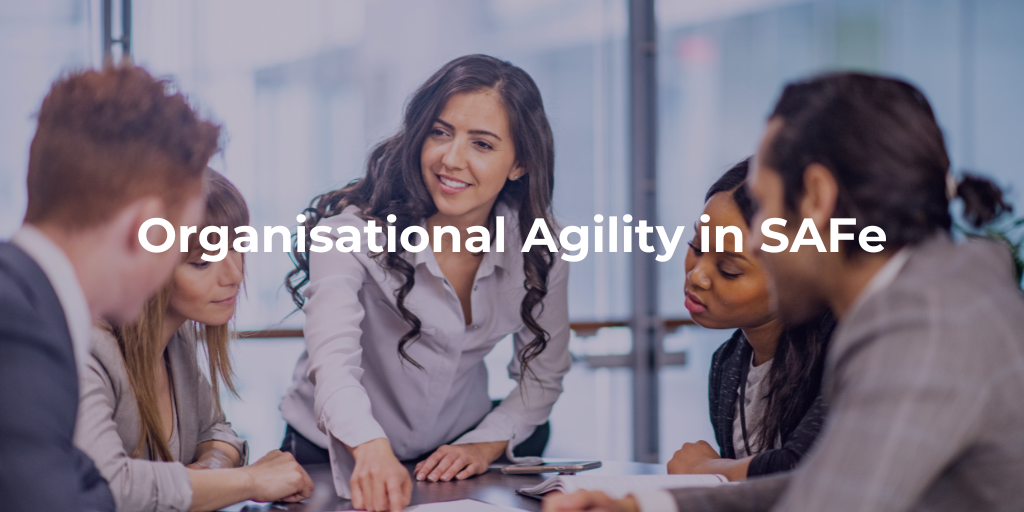Categories
Tags
Newsletter
Subscribe to the QRP International neswletter and get all the news on trends, useful contents and invitations to our upcoming events
Subscribe
Scaled Agile Framework is a body of knowledge that contains structured guidance on values, planning and management, roles and responsibilities. The Scaled Agile Framework (SAFe) is based on seven core competencies. This article deals with one of these core competences: Organisational Agility.
In the context of Business Agility, the competence of Organisational Agility highlights the ability of “Lean-thinking” people and Agile Teams within the company to fine-tune business processes, recalibrate strategies with new problem-solving commitments and readily reconfigure the organisation to seize emerging opportunities.
Each of these core competencies is supported by a dedicated assessment, which provides the company with a method to measure its proficiency.
In the digital age, an organisation’s advantage lies in its ability to quickly meet customer needs, deliver value and adapt to evolving strategies and opportunities. However, traditional organisational structures hinder agility, as they are designed for control rather than innovation. Incremental changes are insufficient and require a more agile and lean approach.
Scaled Agile Framework (SAFe) introduces a “dual operating system” for digital transformation. This leverages existing hierarchies and, at the same time, implements a network of value streams, revitalising the organisation.
By focusing on value streams and discarding traditional silos, SAFe restores the network operating system that is essential to meet digital challenges.
The organisational agility competence is developed in three dimensions:
“Lean-thinking” people and Agile teams are the first dimension of Organisational Agility. Agile resources and Agile teams are critical to the delivery of business solutions, not only software applications and digital systems, but also all the activities aimed at their support (privacy, security, support, availability), that are needed to continuously address business problems.
The Lean-Agile mindset sets the correct way of thinking, but it is the ten SAFe principles that guide roles and effective practices and behaviours. These principles are fundamental to organisational agility and both Lean-thinking people and Agile teams make it possible.
Three different steps can be identified:
Step 1. Being agile
Step 2: Know the value stream
Step 3: Specialise in principles and practices
The Lean business operation is the second dimension of Organisational Agility. Organisational agility requires companies to understand both Operational Value Streams (OVS), that deliver business solutions to customers, and Development Value Streams (DVS), which are the main focus of SAFe, that develop those solutions.
For many developers, the people who manage the operational value streams are the clients of the development value streams. They directly use, manage and support the solutions that bolster the value of the stream to the end user.
This requires developers to:
These responsibilities help to ensure that the developed business solution is a “complete product solution”, one that meets the needs of internal and external customers.
Lean companies focus on value streams to eliminate activities that do not create value. Good development systems consistently create profitable value streams.
Teams look for opportunities to reduce the stream’s length by focusing on improvements in one or more phases. This mainly involves reducing waiting time.
Eliminating the main causes of wasting time is usually the quickest way to significantly accelerate time to market.
Strategy Agility is the third dimension of Organisational Agility. It is the ability to perceive changes in market conditions and to implement new strategies quickly and decisively, when required. It also includes the good sense to persevere with things that work – or will work – if one has sufficient time and concentration.
Businesses that have mastered strategic agility generally exhibit several capabilities including:
Without Organisational Agility, companies cannot react quickly when changes occur. To be fully responsive to threats and opportunities, Lean and Agile working methods must spread throughout the organisation. This change requires a workforce that is trained in Lean-Agile practices and understands its culture, values and principles.
The entire customer journey, including the delivery, management and support of business solutions, must be continuously optimised to reduce time-to-market and increase customer satisfaction.
Strategic Agility provides the ability to perceive and respond to changes in the market, to rapidly evolve and implement new strategies, and to reorganise when necessary to address emerging opportunities. As a result, change becomes an opportunity, not a threat.
Do you want to learn about the other SAFe core competencies? Download our infographic on the 7 SAFe core competences!
Moreover, if you want to learn more about SAFe in general, read our blog “What is SAFe?”.
QRP International is an Accredited Training Provider (ATP) for SAFe. For more information, check our Leading SAFe Course or contact us!
Source: Source: Scaled Agile Framework